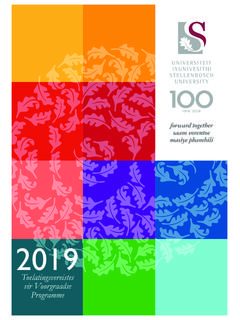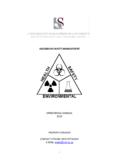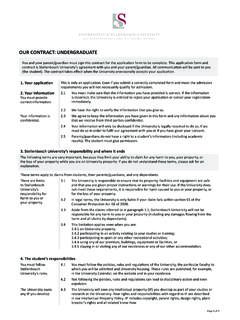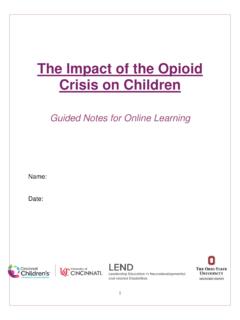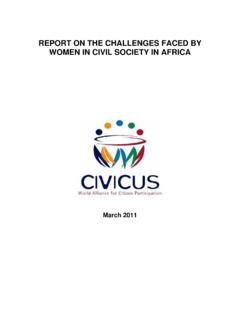Transcription of Intimate Partner Violence (IPV) in South Africa: How to ...
1 CPMH Intimate Partner Violence (IPV) in South Africa: Policy Brief How to break the vicious cycle November 2015. Dr Kate Joyner, Dr Kate Rees and Dr Simone Honikman The challenge Half of women murdered in South Africa are killed by their Intimate Partner . Our country has reported the highest rates of such murders in the However, the devastating physical, mental and social consequences of this problem are mostly hidden. There is very strong evidence that Intimate Partner Violence (IPV) exists in a vicious cycle with HIV, mental illness, poor reproductive health, poor childhood development and chronic disease, and leads to numerous injuries, disability and ,3 Abused women are twice as likely as non-abused women to report physical and mental health This problem is costly since women in abusive relationships make greater use of health and other services.
2 Women unable to make healthy Conflict in decisions about their relationship own reproductive health IPV & HIV. a vicious cycle Societal norms Depression & anxiety enabling Violence & Risky sexual & reproductive control of women in behaviours relationships Substance / alcohol use Increased HIV. transmission Poor child outcomes A window of opportunity IPV survivors are often hesitant to disclose their situation, due to stigma. Many have had bad experiences with service providers who fail to detect their problem or deny that it exists. Health and social services provide windows of opportunity to identify and respond to this Violence constructively. Simple actions from several sources can, together, operate to prevent the consequences of IPV and establish social norms against IPV.
3 Intimate Partner Violence is any behaviour within a current, ex- or would-be Intimate relationship that causes physical, psychological or sexual harm to either Partner . Examples include: Physical Violence : punching, kicking, burning Emotional (psychological) abuse: insults, constant humiliation, intimidation, threats of harm, or threats to take away the children Sexual Violence : forced sexual intercourse and other forms of sexual coercion Controlling behaviours: isolating one's Partner from friends and family, monitoring their movements, or restricting access to financial resources, employment, education and health care Alan J Flisher Centre for Public Mental Health a collaboration between the University of Cape Town and Stellenbosch University The Western Cape Departments of Caring for Mothers Health and Social Development Caring for the Future Cultural and social norms that can support Violence Cultural and social norms are highly influential in shaping behaviour in Intimate relationships.
4 Norms can protect against Violence or support and encourage the use of it. Most IPV is perpetrated by men. The murder of a woman by her Partner is the most extreme consequence of IPV. In South Africa, a woman dies in this way every eight Working with men and boys through group education combined with community outreach has shown efficacy in reducing use of Violence against women and girls. Note that multi level interventions work better than single level interventions, and that these need to focus on transforming harmful gender Violence during pregnancy In South Africa, studies have shown that 36-40% of pregnant women experience physical IPV, while 15-19%. experience sexual , 8 In this vulnerable population, IPV is associated with a range of physical and mental health consequences for the mother including pregnancy loss, depression and post-traumatic stress In South Africa, the mortality rate attributed to IPV is the highest globally and is double that of the United For the infant, there are increased risks associated with preterm delivery and low birth ,12, 13.
5 Violence against women is everyone's business. At this crucial stage in our developing nation, the health and social development sectors are able to step up to their role as advocates for the vulnerable in society, and set norms for addressing these problems. Doing nothing perpetuates the Violence . What can be done? IPV prevention and responding holistically to survivors are key to providing comprehensive care in our context. This requires that for each point of entry for women, standard operating procedures are established, implemented and audited. All actors in the health and social development system need to have a defined role to play, embedded in their job descriptions. Healthcare and social service providers at all levels of care are well placed to identify IPV and offer appropriate management.
6 Their role is to: Ask about IPV whenever it is suspected or in high risk women antenatal, mental health and HIV care Provide detailed, signed and dated documentation Be supportive and affirming without judgment or pressure Ensure comprehensive clinical care, including STI screening and treatment, and contraception Develop a safety plan with the woman Provide appropriate referrals (shelters, mental health nurse, social service provider, specialist NGOs, emergency care, legal assistance, job skills programme). Provide active follow-up and liaison National, provincial and district health management can provide the enabling environment for this to take place. Their role is to: Ensure IPV protocols and standard operating procedures exist and are well communicated at each facility Ensure a broad staff component are adequately trained for IPV work Ensure staff are adequately supervised and emotionally supported for IPV work Ensure staff such as mental health, HIV and emergency care providers have indicators relating to IPV included in their performance agreements Ensure indicators for IPV are included in routine monitoring Develop detailed action plans to protect staff from threat or harm Intersectoral work needs to be promoted and developed to address IPV adequately.
7 The roles of the Department of Health and the Victim Support Services within the Department of Social Development include: Developing and maintaining working intersectoral relationships with each other, SAPS, Justice, Crime Prevention and Security, and the NGO sector, from strategic to local level Working with communities using participatory approaches, to identify community strengths, mobilise communities and increase their capacity for responding meaningfully to IPV. Entry points Child health Violence in the home has serious negative impacts across the life- cycle, especially for children. Children should not necessarily be removed from the home when their carers experience IPV. The family Maternal health should be supported and provided About 1 in 3 women attending with appropriate care and referrals.
8 Maternity services in SA will be experiencing domestic IPV causes antenatal and postnatal depression and Brief interventions for IPV can improve pregnancy All women in maternal care should be asked about experiences of IPV and providers should show concern and follow response protocols. Mental health Women experiencing IPV should be assessed for symptoms of depression, anxiety and post-traumatic stress Emergency care disorder. Routine enquiry about IPV is best practice IPV often leads to alcohol and when managing injuries. substance abuse, which in turn can lead Thorough notes should be taken, with legal to further Partner Violence . issues in mind Primary care mental health nurses The following should be carefully are an important resource for women documented: identified with IPV.
9 Events leading to the injuries Mental health nurses should be Use of weapons adequately equipped to care holistically Name of abuser and relationship to client for IPV survivors and this should Verbatim quotations where appropriate be part of their job description and Type of injuries, bruise, abrasion, performance agreement. laceration Location and size of old and new injuries An opinion as to whether the injuries are consistent with the history of abuse Note if there appears to be inconsistency between the injuries and explanation (there may be reluctance to confirm abuse). Signature of provider on every page and name in block letters Date of entry Remember that you are less likely to be called to court if documentation is complete and legible.
10 *IPV champion These quotes are taken from a study done in the Western Cape examining women's experiences of an IPV intervention in the health Although the service was challenging to implement, women who received it felt supported and validated, and some experienced improvements in their home lives. Conclusion The Departments of Health and Social Development are ideally placed to assume a leadership role in addressing the national crisis of IPV. Numerous opportunities exist to integrate appropriate care within existing service delivery platforms and programmes such as the Justice, Crime Prevention and Security cluster. Meaningful intersectoral collaborations could strengthen impact, prevent Violence , and promote community wellness.
